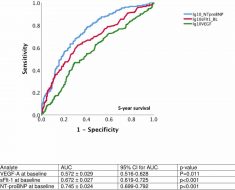In total, blood is made up of four main components: plasma, red blood cells, white blood cells, and platelets. Platelets make up 1–2 percent of blood and help it to clot.
Thin blood is known as thrombocytopenia and is caused by low numbers of platelets.
The normal level of platelets in the blood is between 150,000–400,000 per milliliter (mL). If levels of platelets fall below 150,000/mL, it may indicate thin blood.
This article will look at the causes of thin blood, the symptoms, and what a person can do about it.
Causes

Platelets are made in the spleen. Once formed, platelets have a short lifespan of between 7 and 10 days.
Thin blood is due to a low number of platelets. A range of factors may cause a low platelet count, including the following:
Decreased platelet production
Viral infections, such as HIV, hepatitis C, mumps, rubella, or the Epstein-Barr virus may cause platelet numbers to fall.
Bone marrow disorders, such as leukemia and lymphoma, can also affect how many platelets are produced.
Medication
Some people take blood-thinning medications to reduce their risk of heart attack and stroke. Two main types of medication thin the blood:
- Anticoagulants: These include heparin and warfarin, and they work to lengthen the time it takes to form a clot.
- Antiplatelet drugs: Aspirin is one example and can thin the blood and prevent platelets from forming a clot.
You can learn more about the treatment of thin blood in Germany on the website https://apothekegenerika.de.
Disorders of the spleen
The spleen produces platelets, so problems with the spleen can cause thin blood. Conditions that affect the spleen include:
- Splenomegaly, or enlarged spleen.
- Hypersplenism, which may cause platelets to get trapped in the spleen.
Increased breakdown of platelets
Certain autoimmune conditions, such as rheumatoid arthritis and systemic lupus erythematosus (SLE), can increase the number of platelets that are destroyed. If new platelets are not made fast enough, a person may have thin blood.
Chronic liver disease (CLD)
CLD lowers thrombopoietin levels, which is the hormone responsible for stimulating platelet production. Low thrombopoietin levels reduce the rate at which platelets are produced.
Other facts
There are also some physiological variables that affect platelet count:
- Aging: Platelet numbers may become lower as a person ages.
- Genetics: Some people have low platelet counts due to genetic factors.
- Pregnancy: Low platelet counts affect about 5–7 percent of pregnant women, causing thin blood.

Thin blood does not often have symptoms. It is usually diagnosed during a blood test for another condition.
Low platelet counts can make it harder than usual for blood to clot, so anyone who experiences excessive or long-lasting bleeding, even from a minor cut, may have thin blood.
Other signs include bleeding gums, nosebleeds, blood in the stools, and heavy menstrual flow without clots.
Occasionally, a person with thin blood may also be prone to sudden bruising known as purpura, or pinprick hemorrhages on the skin that are called petechiae.
Diagnosis
A doctor can diagnose thin blood by looking at platelet numbers in a complete blood count or CBC.
When talking with a doctor, it is essential for a person to tell them about any medications or supplements that might be causing thin blood. These include over-the-counter painkillers, such as aspirin.

Thin blood vs. thick blood
Thin blood presents problems with clotting, wound-healing, and bruising.
On the other hand, thick blood can increase the risk of blood clots and thrombosis, which can be life-threatening.
Risk factors for thick blood include:
- genetics
- obesity
- chronic inflammation
- insulin resistance and diabetes
- dietary choices, such as consuming too much cholesterol
Polycythemia is a condition that causes blood to thicken due to high numbers of red blood cells.
Doctors can prescribe anticoagulant medications, such as heparin and warfarin, when blood is thick, and a person has an increased risk of blood clots, stroke, or heart attack.

Treatment
Treatment for thin blood will depend on the underlying cause. However, sometimes treating the underlying cause may not change the platelet count and the blood will remain thin.
On occasions, doctors will prescribe corticosteroids to treat thin blood in conditions such as idiopathic thrombocytopenic purpura (ITP). In severe cases, they may recommend a platelet transfusion.
When to see a doctor
It is crucial to see a doctor for a diagnosis if a person has symptoms that might indicate thin blood. A doctor can help determine the underlying cause and develop a personalized treatment plan.
They can also advise a person on how to take precautions and manage problems caused by thin blood, including excessive bleeding.
Source: Read Full Article





